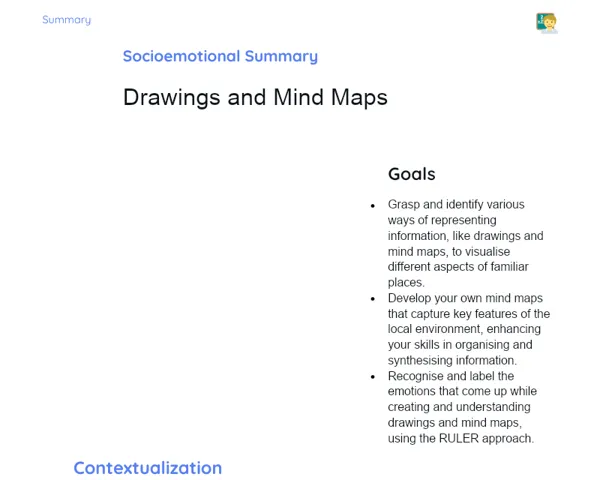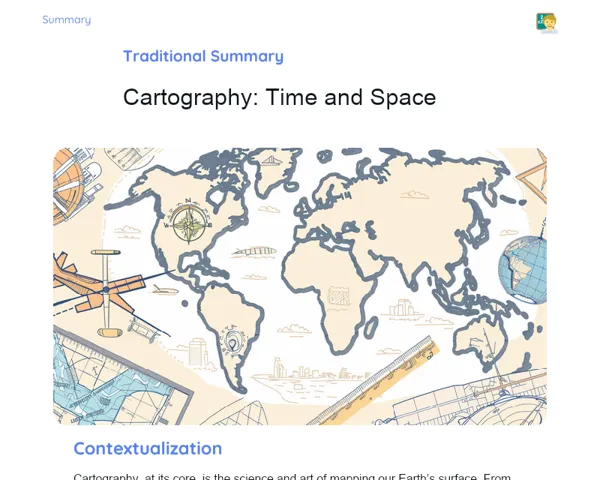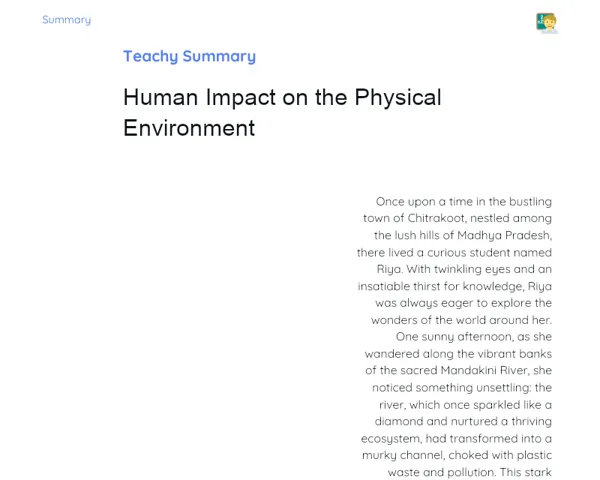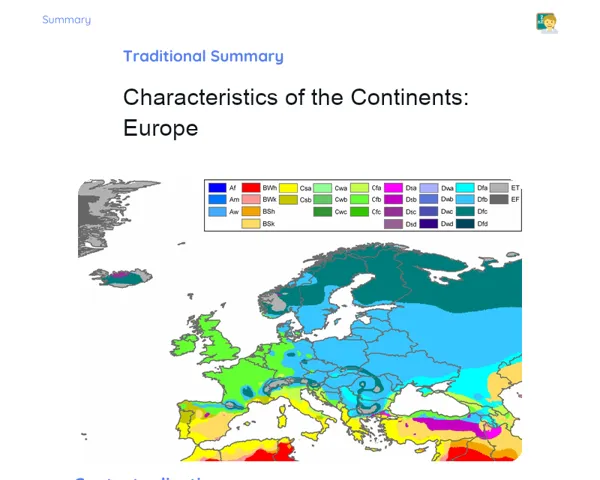Summary Tradisional | Earth: Tectonic Plates
Contextualization
Our Earth is composed of several layers, with the outermost part known as the crust. This crust isn’t a continuous layer; instead, it is broken into large segments called tectonic plates. These plates are always on the move, albeit very slowly, typically at a rate of a few centimeters per year. Over time, this movement can lead to major changes on the Earth's surface, including the formation of mountains, earthquakes, and tsunamis.
The motion of these tectonic plates is driven by convection currents in the mantle, which are generated by heat emanating from the Earth's core. There are three primary types of tectonic plate movements: divergent (where plates move apart), convergent (where plates collide), and transform (where plates slide sideways past each other). Each movement type has distinct effects on the Earth's geography, significantly impacting human life and the structure of societies.
To Remember!
Structure of Tectonic Plates
Tectonic plates are substantial, rigid rock slabs that constitute the Earth's crust and upper mantle. They fit together like pieces of a jigsaw puzzle on the Earth's surface. The incessant motion of these plates, driven by convection currents in the mantle due to heat from the core, leads to the fragmentation of the crust into varying sizes of plates.
While these movements occur at a glacial pace, they can cause transformative changes to the Earth's surface over time. The interactions among these plates can give rise to mountains, earthquakes, and tsunamis, all of which have direct implications on geography and human existence.
There are multiple tectonic plates across the globe, including the South American Plate, the African Plate, and the Pacific Plate, among others. The manner in which these plates interact with their neighbours varies based on the direction and type of movement, leading to many geological phenomena we observe.
-
Tectonic plates are rigid rock slabs that form the Earth's crust and upper mantle.
-
These plates are perpetually in motion due to convection currents in the mantle.
-
Plate movements can trigger the formation of mountains, earthquakes, and tsunamis.
Types of Tectonic Plate Movements
Tectonic plate movements can be classified into three major categories: divergent, convergent, and transform. Each movement type possesses unique characteristics and implications for Earth's geography.
Divergent movement occurs when tectonic plates drift apart, predominantly along ocean ridges where magma rises from the mantle, forming new oceanic crust. A prime example is the Mid-Atlantic Ridge, where the South American Plate and the African Plate are separating.
In convergent movement, plates collide, which can lead to the subduction of one plate beneath another, resulting in mountains or ocean trenches. The Indo-Australian Plate colliding with the Eurasian Plate, leading to the formation of the majestic Himalayas, is a notable case. In transform movement, plates slide past each other, exemplified by the San Andreas Fault in California, where the Pacific Plate and North American Plate shift laterally.
-
Divergent movement: plates drift apart; example: Mid-Atlantic Ridge.
-
Convergent movement: plates collide; example: the Himalayas.
-
Transform movement: plates slide past each other; example: San Andreas Fault.
Consequences of Tectonic Plate Movements
The movements of tectonic plates can induce several natural phenomena with profound effects on the Earth's surface and human life. Notable occurrences include earthquakes, tsunamis, and mountain formation.
Earthquakes happen when there’s a sudden release of built-up energy in tectonic faults. This can lead to powerful tremors that may cause extensive destruction of buildings, infrastructure, and can result in loss of life. When these earthquakes transpire underwater, they can give rise to tsunamis, massive waves that can inundate coastal communities.
Mountain formation is another significant event linked to the collision of tectonic plates. When two plates converge, the resulting pressure and heat can uplift large portions of land, creating majestic mountain ranges. An example of this is the Himalayas, formed from the collision of the Indo-Australian Plate and the Eurasian Plate.
-
Earthquakes: triggered by the release of energy in tectonic faults.
-
Tsunamis: enormous waves caused by underwater earthquakes.
-
Mountain formation: results from the collision and uplift of large land masses.
Regions of High Tectonic Activity
Certain areas of the world are more likely to experience natural events related to tectonic plate movements. These areas, known as zones of high tectonic activity, include regions such as the Pacific Ring of Fire, the San Andreas Fault in California, and the Himalayan region.
The Pacific Ring of Fire, encircling the Pacific Ocean, is renowned for its seismic and volcanic activity. This area faces frequent earthquakes and volcanic eruptions due to the convergence of numerous tectonic plates. The San Andreas Fault in California is a transform fault zone where the Pacific Plate and North American Plate move past each other laterally, resulting in recurrent earthquakes.
The Himalayan region exemplifies high tectonic activity, where the ongoing clash between the Indo-Australian Plate and the Eurasian Plate continues to lift the mountains. These regions are not only geologically significant but also necessitate disaster prevention and management strategies to safeguard local populations.
-
Pacific Ring of Fire: characterized by high seismic and volcanic activity.
-
San Andreas Fault: a region of frequent earthquakes in California.
-
Himalayas: mountains continuously elevated by the collision of tectonic plates.
Key Terms
-
Tectonic Plates: Large rigid rock slabs that make up the Earth's crust and upper mantle.
-
Divergent Movement: A type of movement where tectonic plates move apart from each other.
-
Convergent Movement: A movement where tectonic plates collide.
-
Transform Movement: A type of movement where tectonic plates slide laterally past each other.
-
Earthquakes: Powerful tremors triggered by energy release in tectonic faults.
-
Tsunamis: Massive waves that result from underwater earthquakes.
-
Pacific Ring of Fire: An area with intense seismic and volcanic activity around the Pacific Ocean.
-
San Andreas Fault: A transform fault zone in California prone to seismic activity.
-
Himalayas: Mountain ranges formed by the collision of the Indo-Australian Plate and the Eurasian Plate.
Important Conclusions
In our lesson on tectonic plates, we gained a thorough understanding of their structure, movement, and the resulting natural phenomena such as earthquakes, tsunamis, and mountain formations. It was highlighted how these events significantly influence both the Earth's geography and human life, underscoring the importance of studying and understanding these natural processes. We also identified regions that are particularly vulnerable to these occurrences and discussed potential measures to reduce the impact of natural disasters.
Comprehending the workings of tectonic plates is crucial for planning urban developments safely, especially in areas with high tectonic activity. For instance, constructing buildings that can endure seismic shocks and establishing early warning systems are vital measures to protect life and property. This understanding is pivotal not only for geography but also for civil engineering and disaster risk management.
We encourage students to delve deeper into this fascinating topic, as studying tectonic plates broadens knowledge of our planet and fosters awareness about the necessity of preparedness and resilience against natural disasters. The insights gained in this lesson serve as an essential foundation for becoming informed and responsible citizens who can contribute positively to their communities' safety and well-being.
Study Tips
-
Review key concepts regarding the types of tectonic plate movements and their implications, utilizing maps and diagrams for better understanding.
-
Watch documentaries and educational videos on tectonic plates and natural disasters to enhance comprehension and see real-world examples.
-
Research disaster prevention and mitigation strategies in regions with high tectonic activity, comparing them to practices in your locality.



